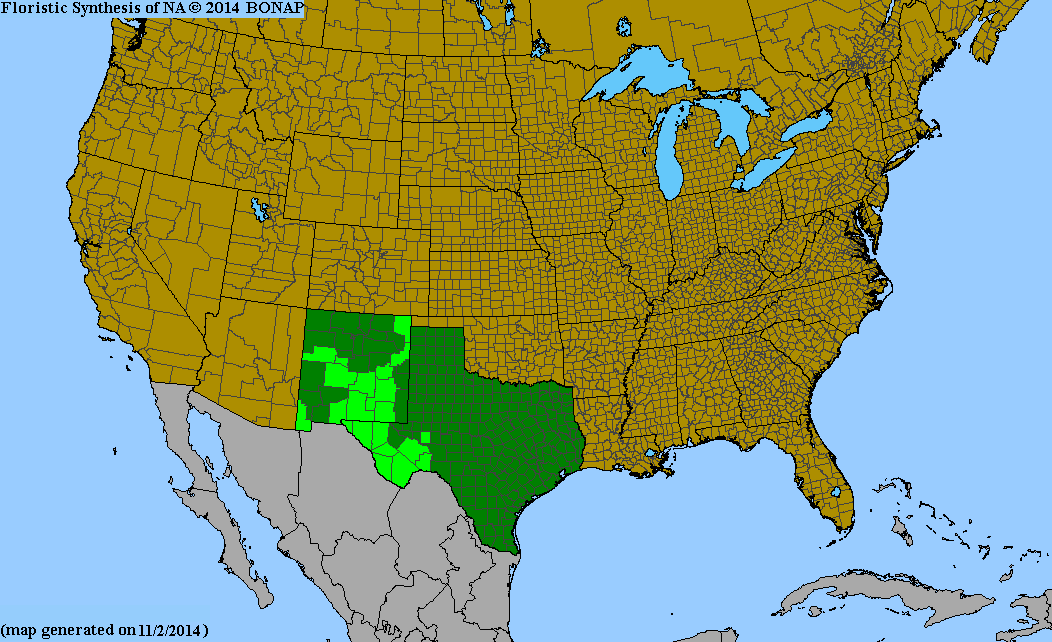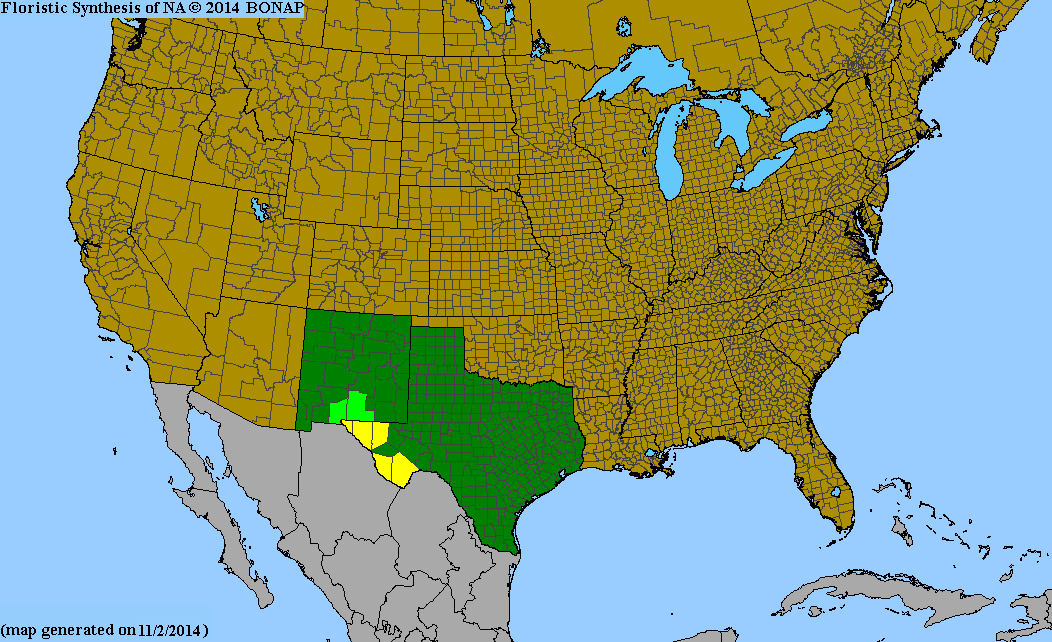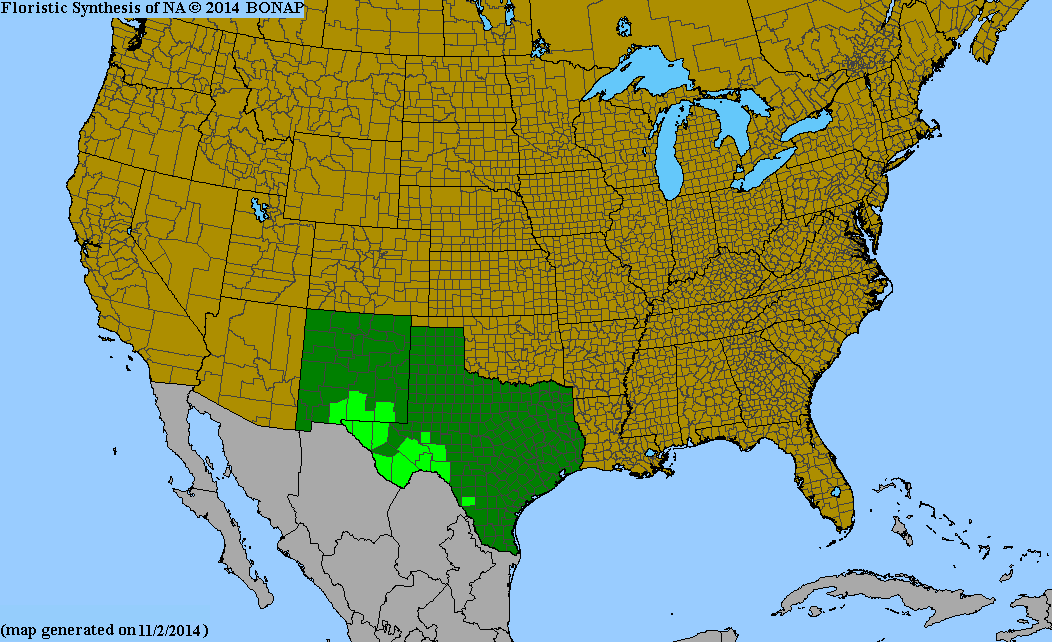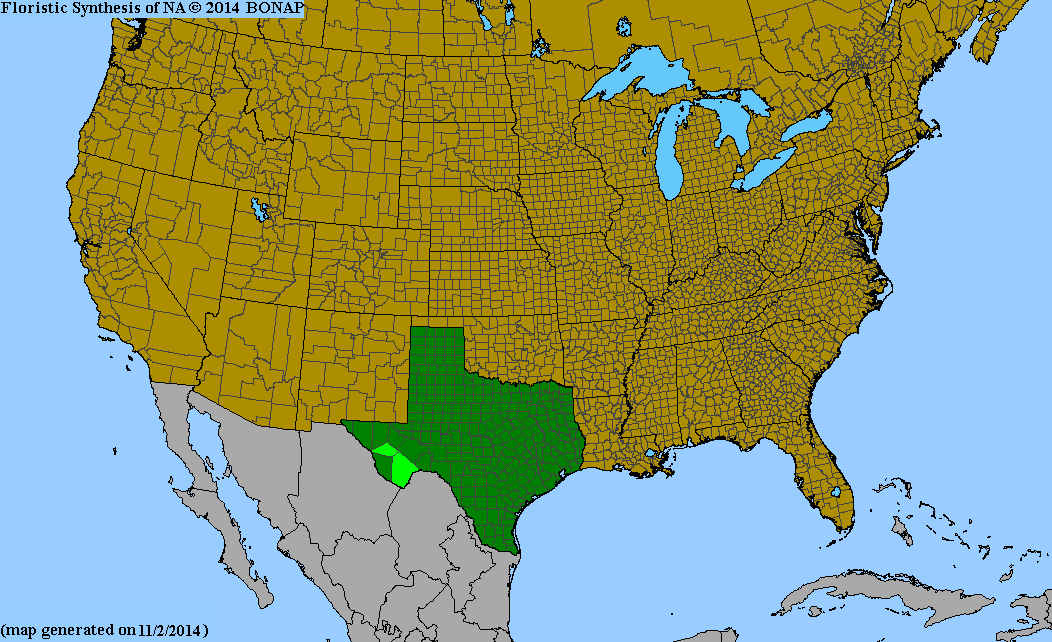Click on the images below to see larger versions.
| Scientific Name | Echinocereus coccineus ssp. transpecosensis | USDA PLANTS Symbol | N/A |
| Common Name | Claret Cup | ITIS Taxonomic Serial No. | N/A |
| Family | Cactaceae (Cactus) | SEINet Reference |
Click Here |
| Description | Habitat: Dry, limestone soils in semi-desert shrublands, mountains and rocky areas; 2300 to 7800 ft. Plant: Mounds up to 30 inches across; a few to 20 or more stems. Pads & Spines: Cylindrical to ellipsoidal stems, 2 to 4 inches in diameter and 4 to 16 inches tall with 7 to 11 ribs; dark green to purple surface; round/oval areoles with 1 to 4 central spines 0.4 to 2.4 inches long and 6 to 11 radial spines 0.2 to 1.2 inches long; yellowish to brown becoming gray. Inflorescence: Funnel to cup-shaped flowers with rounded, rather stiff, bright crimson tepals with cream-colored bases, 1.6 to 3 inches across; male flowers with cream-colored filaments and pink-purple pollen-filled anthers; female flowers with short filaments and empty anther sacs below 6 to 14 light-green stigma lobes. Bloom Period: March and April. Fruit: Reddish-brown to pink, round to oval, 1 to 1.5 inches long and almost as wide. References: iNaturalist and A New Echinocereus Taxon with Red Flowers From the Trans Pecos Area of Texas by Blum and Oldach in "The Cactus Explorers". Note: This is a relatively new subspecies that was described in 2015 by Wolfgang Blum, Traute Oldach and Jörn Oldach in the reference above. |
BONAP Distribution Map N/A | Texas Status: Native |
| Scientific Name | Echinocereus dasyacanthus (Echinocereus pectinatus var. neomexicanus) | USDA PLANTS Symbol | ECDA |
| Common Name | Texas Rainbow Cactus, Spiny Hedgehog Cactus | ITIS Taxonomic Serial No. | 512689 |
| Family | Cactaceae (Cactus) | SEINet Reference |
Click Here |
| Description | Habitat: Desert habitat; scrubland, grassy plains, canyon sides and limestone terraces, up to 5,000 feet; in Texas, found primarily in Big Bend. Plant: Single, sometimes branching stems up to 12 inches tall with 15 to 22 narrow/shallow ribs; annual growth increments marked (often vaguely) by rings of spines with contrasting colors. Spines: Obscuring stem; vertical central spines 3 or 7 to 9, about 1/4-inch long; radial spines 18 to 22, 1/4 to 1/2 inch long, pale brown or pink. Inflorescence: Usually yellow flowers, but can range to rose-pink and magenta, 3 to 5 inches across with dark green stigma lobes and yellow anthers in the center; long, pointed petals, outer sometimes tinged with magenta on the outside, inner streaked with green on the inside; green petal base. Bloom Period: March to May. References: Echinocereus pectinatus var. neomexicanus in "Manual of the Vascular Plants of Texas" by Correll and Johnston, Cactus Art, and www.wildflower.org. |
BONAP Distribution Map |
Texas Status: Native |
| Scientific Name | Echinocereus enneacanthus ssp. enneacanthus | USDA PLANTS Symbol | ECENE2 |
| Common Name | Strawberry Hedgehog Cactus | ITIS Taxonomic Serial No. | 912751 |
| Family | Cactaceae (Cactus) | SEINet Reference |
Click Here |
| Description | Habitat: Desert environments; gravelly hills, sandy soils, desert mountains from 1800 to 4000 ft; exposed or beneath shrubs. Plant: Clumps of several to many pickle-shaped stems, each about 6 inches long and 2 to 4 inches across, medium to light green or yellowish green. Pads & Spines: Stems with 7 to 10 ribs, 1 to 4 stout central spines up to 3-5/8 inches long, flattened or angular and may be recurved; 6 to 9 radial spines 1-5/8 inches long. Inflorescence: Pink to magenta funnel-shaped flowers on each stem, up to 3-1/8 inches long and 3-1/2 inches across; filaments greenish to pink, anthers yellow; 6 to 10 green stigma lobes. Bloom Period: April and May. References: "Cacti of Texas" by Powell, Weedin and Powell and "Little Big Bend" by Roy Morey. Note: Similar appearance to E. stramineus ssp. stramineus except that it usually has few stems arranged in a flat cluster rather than a congested mound, and that it generally grows at lower elevations. |
BONAP Distribution Map |
Texas Status: Native |
| Scientific Name | Echinocereus stramineus | USDA PLANTS Symbol | ECST2 |
| Common Name | Strawberry Cactus | ITIS Taxonomic Serial No. | 912934 |
| Family | Cactaceae (Cactus) | Flora of North America Ref. | Click Here |
| Description | Habitat: Desert environments; limestone rock outcrops in dry mountains and hillsides from 2500 to 5000 ft. Plant: Clumps or dome-like mounds of 20 to 100+ branches, mounds up to 3 ft. across; stems densely covered with spines. Pads & Spines: Stems erect, long ovoid, up to 12 inches long and 1-3/4 to 4 inches across; 11 to 17 ribs per stem; areoles 1/4 to 5/8-inch apart; 2 to 4 central spines 2 to 3-1/2 inches long and 7 to 10 shorter (3/4 to 1-1/4 inch long) radial spines per areole; spines straight, straw-colored and becoming translucent, glassy-looking. Inflorescence: Many large magenta flowers 3-1/3 to 4-3/4 inches across; reddish filaments, yellow anthers; thick style supporting 10 to 13 green stigma lobes. Bloom Period: March to May. Fruit: Bristly reddish-brown, round to oval, 2 to 2-3/8 inches long. References: "Cacti of Texas" by Powell, Weedin and Powell, "Little Big Bend" by Roy Morey and Flora of North America |
BONAP Distribution Map |
Texas Status: Native |
| Scientific Name | Echinocereus viridiflorus var. russanthus (Echinocereus russanthus, Echinocereus russanthus ssp. russanthus) | USDA PLANTS Symbol | ECVIR ECRU4 |
| Common Name | Rusty Hedgehog Cactus | ITIS Taxonomic Serial No. | N/A 51700 |
| Family | Cactaceae (Cactus) | CactiGuide.com Reference | Click Here |
| Description |
Habitat: Desert environments; limestone and igneous soils in desert scrub, grasslands and mountains; endemic to Big Bend area from 2300 to 6400 ft. Plant: Cylindrical stems 2 to 10 inches tall and 1-1/2 to 3-1/2 inches across and may be branched at bases densely covered with spines. Pads & Spines: Stems with 12 to 18 ribs; 9 to 12 central spines 3/8 to 1-1/2 inches long and 30 to 45 radial spines 1/3 to 5/8-inch long; reddish brown to blackish or white with darler tips. Inflorescence: Comparatively smaller rusty-red funnel-shaped flowers 3/4 to 1-3/8 inches long growing from the sides of the stems; yellow anthers, pale-yellow style with and 8 to 10 green stigma lobes. Bloom Period: February to April. Fruit: Green to dull red, almost round to oval, 3/8 to 1/2-inch long. References: "Cacti of Texas" by Powell, Weedin and Powell and "Little Big Bend" by Roy Morey. Note: There is some disagreement on the naming of the species. The name used here is that cited by the Powell, Weedin and Powell; Blum suggests E. russanthus ssp. russanthus in his Echinocereus Status Liste. |
BONAP Distribution Map E. russanthus |
Texas Status: Native |

Echinocereus coccineus ssp. transpecosensis, Williams Ranch Road, Guadalupe Mountains NP, Culberson Co. 06814

Echinocereus coccineus ssp. transpecosensis, Williams Ranch Road, Guadalupe Mountains NP, Culberson Co. 06838































